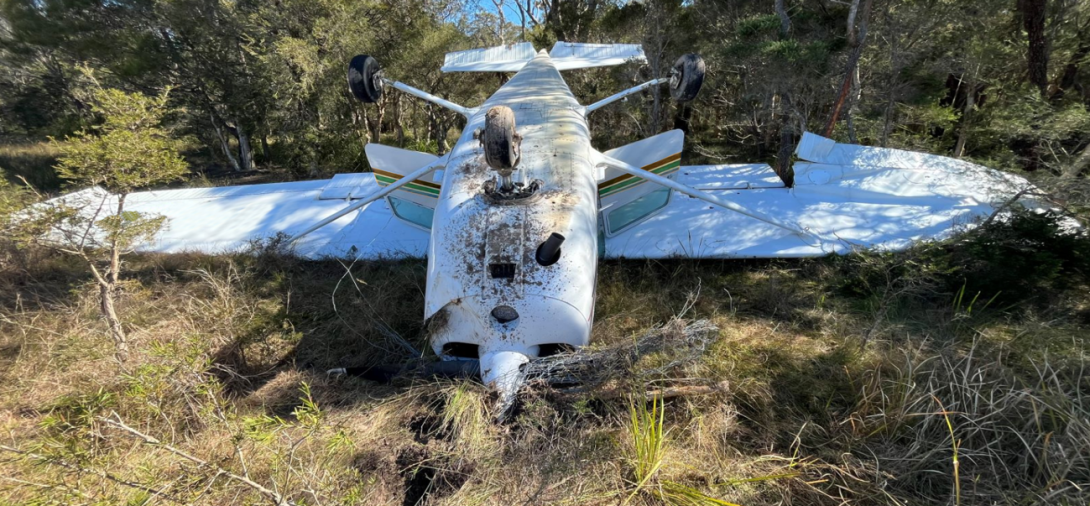| Occurrence Briefs are concise reports that detail the facts surrounding a transport safety occurrence, as received in the initial notification and any follow-up enquiries. They provide an opportunity to share safety messages in the absence of an investigation. |
What happened
On 22 August 2022, at 1030 local time, a Cessna 172 was on approach to runway 02 at Warnervale, New South Wales. The wind was reported by the pilot as 10 kt from the north-west, gusting to 15 kt with light turbulence in the area. During the landing phase, the aircraft encountered turbulence and the pilot elected to conduct a missed approach from approximately 50 ft above ground level. After applying full throttle, the aircraft began veering left of the runway centreline and the pilot reported using right rudder and aileron to correct the aircraft’s flight path but was unable to maintain directional control. The aircraft pitched down and collided with terrain, coming to rest inverted (Figure 1). The aircraft sustained substantial damage and the pilot remained uninjured.
Missed approach
The pilot reported experiencing low level turbulence which upset the aircraft, prompting the decision to conduct a missed approach. The turbulence and crosswind component would have increased the difficulty to successfully conduct the manoeuvre as turbulence can quickly and unpredictably change the aircraft’s direction, and performance. The addition of a crosswind component increases the workload and difficulty to maintain runway centreline. The Federal Aviation Administration (FAA) airplane flying handbook discusses the common errors made when conducting a low-level missed approach (Airplane Flying Handbook (FAA-H-8083-3B) Chapter 8 (p.8-14).
Figure 1 Accident site

Source: Provided by the operator
Safety action
The operator has implemented revised training practices to further expose trainees to missed approaches, unusual attitude recovery and identifying/recognising undesired aircraft states during flight training. Furthermore, the operator introduced new requirements for 90-day recency checks, requiring pilots to not only conduct circuits but also perform emergency and missed approach procedures.
Safety message
Pilots should ensure they are familiar with the aircraft’s or operator’s missed approach procedure and are confident conducting the manoeuvre. Commanding the Go-Around | Flight Safety Australia breaks down the missed approach procedure and discusses common errors and aircraft behaviour.
About this report
Decisions regarding whether to conduct an investigation, and the scope of an investigation, are based on many factors, including the level of safety benefit likely to be obtained from an investigation. For this occurrence, no investigation has been conducted and the ATSB did not verify the accuracy of the information. A brief description has been written using information supplied in the notification and any follow-up information in order to produce a short summary report and allow for greater industry awareness of potential safety issues and possible safety actions.


